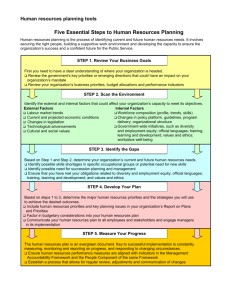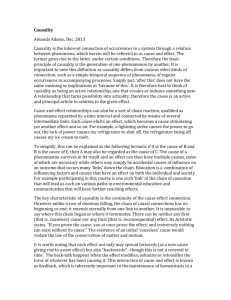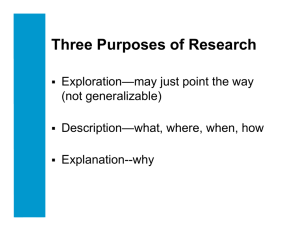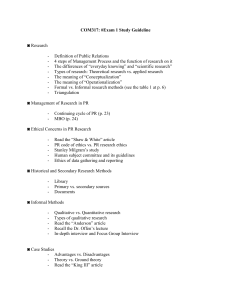doc - PAWS
advertisement
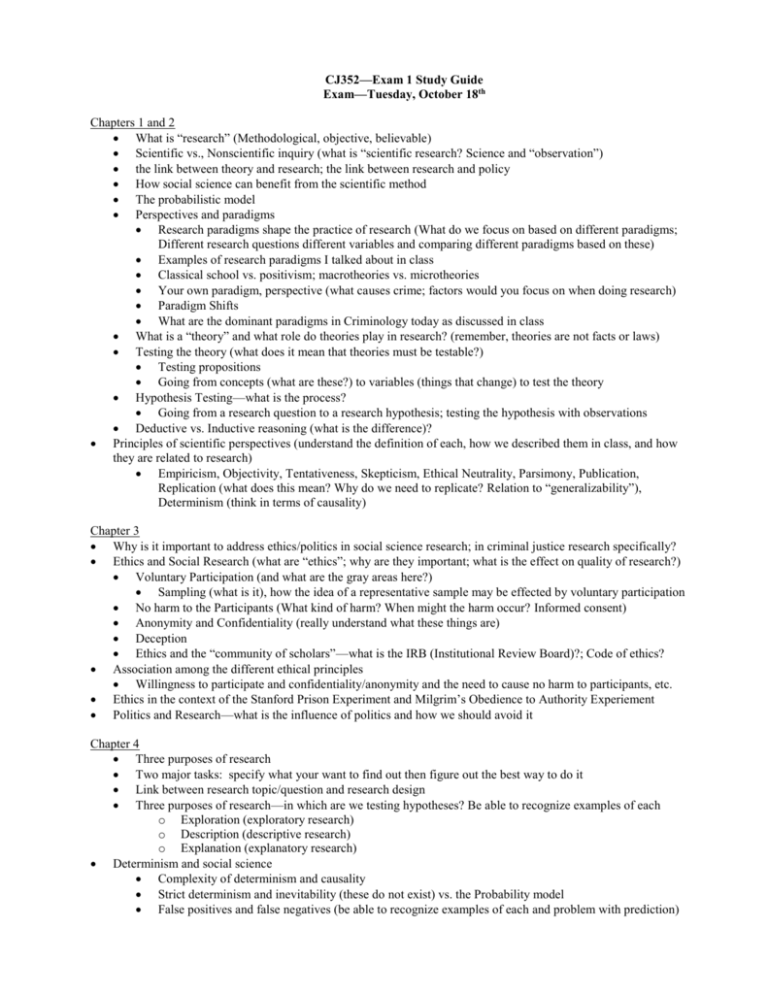
CJ352—Exam 1 Study Guide Exam—Tuesday, October 18th Chapters 1 and 2 What is “research” (Methodological, objective, believable) Scientific vs., Nonscientific inquiry (what is “scientific research? Science and “observation”) the link between theory and research; the link between research and policy How social science can benefit from the scientific method The probabilistic model Perspectives and paradigms Research paradigms shape the practice of research (What do we focus on based on different paradigms; Different research questions different variables and comparing different paradigms based on these) Examples of research paradigms I talked about in class Classical school vs. positivism; macrotheories vs. microtheories Your own paradigm, perspective (what causes crime; factors would you focus on when doing research) Paradigm Shifts What are the dominant paradigms in Criminology today as discussed in class What is a “theory” and what role do theories play in research? (remember, theories are not facts or laws) Testing the theory (what does it mean that theories must be testable?) Testing propositions Going from concepts (what are these?) to variables (things that change) to test the theory Hypothesis Testing—what is the process? Going from a research question to a research hypothesis; testing the hypothesis with observations Deductive vs. Inductive reasoning (what is the difference)? Principles of scientific perspectives (understand the definition of each, how we described them in class, and how they are related to research) Empiricism, Objectivity, Tentativeness, Skepticism, Ethical Neutrality, Parsimony, Publication, Replication (what does this mean? Why do we need to replicate? Relation to “generalizability”), Determinism (think in terms of causality) Chapter 3 Why is it important to address ethics/politics in social science research; in criminal justice research specifically? Ethics and Social Research (what are “ethics”; why are they important; what is the effect on quality of research?) Voluntary Participation (and what are the gray areas here?) Sampling (what is it), how the idea of a representative sample may be effected by voluntary participation No harm to the Participants (What kind of harm? When might the harm occur? Informed consent) Anonymity and Confidentiality (really understand what these things are) Deception Ethics and the “community of scholars”—what is the IRB (Institutional Review Board)?; Code of ethics? Association among the different ethical principles Willingness to participate and confidentiality/anonymity and the need to cause no harm to participants, etc. Ethics in the context of the Stanford Prison Experiment and Milgrim’s Obedience to Authority Experiement Politics and Research—what is the influence of politics and how we should avoid it Chapter 4 Three purposes of research Two major tasks: specify what your want to find out then figure out the best way to do it Link between research topic/question and research design Three purposes of research—in which are we testing hypotheses? Be able to recognize examples of each o Exploration (exploratory research) o Description (descriptive research) o Explanation (explanatory research) Determinism and social science Complexity of determinism and causality Strict determinism and inevitability (these do not exist) vs. the Probability model False positives and false negatives (be able to recognize examples of each and problem with prediction) Causality and Causation (understand the importance of causality) Criteria for Causality Understand what these criteria are and how to determine them as we discussed in class Be able to work through the process yourself (remember the “cows and crime” example) Four Criteria for Causality: 1. Correlation (and different types of correlation) 2. Temporal order is correct 3. Logic of causal relationship 4. Effect not due to some third variable (not spurious) Bidirectional causality Errors in reasoning about causation—Provincialism, Questionable causes Determinism, causality, and “risk factors” How the probabilistic model affects the language we use to describe our research findings (hint: tentativeness) Units of Analysis (what are they, examples of each) o Individuals; Groups (including cohorts); Organization; Geographic/structural level o Drawing conclusions based on unit of analysis o Faulty reasoning about units of analysis—Ecological Fallacy Time-related issues—recognize examples of each o Cross-sectional designs—different groups at the same time o Longitudinal designs—Same thing at different points of time (Trend studies; Cohort studies; Panel studies) o Longitudinal studies the best way to study changes over time; but more complex, difficult, time consuming Also usually the best for answering questions about causal relationships (because of temporal order) Problem of attrition (bias?) Chapter 5 What does the term measurement mean and why is it important? Three things scientists measure (p.121) o Direct observables, indirect observables, constructs (ways to organize reality) Conceptualization and Concepts o Concepts are theoretical; are “real” but measure things that can’t be directly or indirectly measured o How we go to these observables from the construct/concept is through Conceptualization Indicators (and examples of indicators of different concepts) Dimensions (and examples of dimensions of different concepts) Why is it important to conceptualize what you are going to study early in the research process? (figuring out how you are going to define your concepts) Operational definitions and Operationalization choices o Defining Variables and Attributes (should be exhaustive and mutually exclusive) o Single vs. multiple indicators o Levels of Measurement (scale of measurement) o Three properties of scales (a scale may or may not have these)—magnitude, equal intervals, absolute zero o Types of Scales - based on how many (and which ones) of the above properties a scale possesses—ratio, interval, ordinal, nominal (recognize examples of each) What does it mean to say that your definition of your concept will dictate how you measure it (ex, measuring nonserious delinquency) What does it mean to say that how you measure your concept, in effect, defines your concept (ex., using official arrest records to measure criminal behavior) Criteria of measurement quality o Precision and accuracy o Reliability (test-retest, split-half, using established measures, interrater) o Validity (face, criterion, construct, content) o Reliability doesn’t assure validity or vice versa Chapter 6 Composite measures o Multiple indicators to measure one concept o Difference between indexes and scales Index construction (four steps) o Item Selection (face validity, unidimensionality, general or specific, variance) o Examination of empirical relationship (what does it mean; bivariate vs. multivariate) o Index scoring (range? Adequate number of cases at each point. Different weighting?) o Validating the index Scale construction o Likert Scale Typologies (briefly, what are they?) THE BIG PICTURE Why is it so important to be scientific in our research? How do all these things relate to research? How we do research, how we choose our variables and how to measure them, how we interpret our findings (testing our hypothesis/theory) Also, be sure to understand the type of data we can collect (“self-report” vs. “official”) and the pros and cons of each

